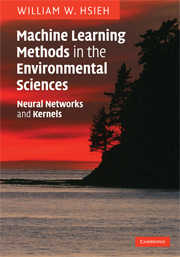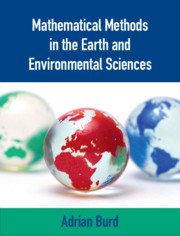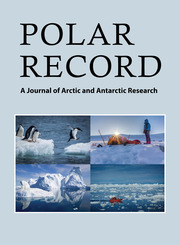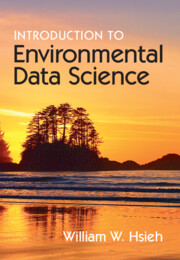Machine Learning Methods in the Environmental Sciences
Machine learning methods originated from artificial intelligence and are now used in various fields in environmental sciences today. This is the first single-authored textbook providing a unified treatment of machine learning methods and their applications in the environmental sciences. Due to their powerful nonlinear modelling capability, machine learning methods today are used in satellite data processing, general circulation models(GCM), weather and climate prediction, air quality forecasting, analysis and modelling of environmental data, oceanographic and hydrological forecasting, ecological modelling, and monitoring of snow, ice and forests. The book includes end-of-chapter review questions and an appendix listing websites for downloading computer code and data sources. A resources website contains datasets for exercises, and password-protected solutions are available. The book is suitable for first-year graduate students and advanced undergraduates. It is also valuable for researchers and practitioners in environmental sciences interested in applying these new methods to their own work.
- Offers broad coverage of the applications of modern non-linear machine learning methods in remote sensing, atmospheric science, oceanography, hydrology and ecology, providing the most extensive resource available
- An appendix listing websites for downloading computer codes and datasets allows the reader to apply the methods discussed in the book to real datasets
- End-of-chapter exercises and a course website with updates to the book material develop problem-solving skills and keep the student/reader at par with new developments
Reviews & endorsements
'… one of the first books describing machine learning techniques in the context of environmental applications … goes a long way in explaining these subjects in a very clear, concise, and understandable way. This is one of the few books where one will find diverse areas of machine learning all within the same cover … aimed at advanced undergraduates and Ph.D. students, as well as researchers and practitioners. No previous knowledge of machine learning concepts is assumed.' Vladimir Krasnopolsky, National Oceanic and Atmospheric Administration (NOAA) and National Weather Service
'[This book] aims to, and succeeds in, bridging the gap between AI and what is often referred to as conventional statistics. Add to that the unique perspective that a physicist and an environmental scientist brings to the table, and one has a truly rare book. … a well-balanced mix of theoretical and practical exercises. … Hsieh's book [is] ideal as both a textbook on the topic, and a reference book for the researcher in the field.' Caren Marzban, University of Washington and University of Oklahoma
'This book is unique because it presents machine learning in the context of environmental science applications. I found it to be a valuable tool to bring myself up to date with the historical and recent developments in the subject of machine learning, and I believe the reader will too. The purchase price is modest. I highly recommend that any student or researcher interested in machine learning methods obtain a copy.' William Burrows, Canadian Meteorological and Oceanographic Society Bulletin
Product details
July 2009Hardback
9780521791922
364 pages
253 × 180 × 20 mm
0.86kg
Available
Table of Contents
- Preface
- 1. Basic notions in classical data analysis
- 2. Linear multivariate statistical analysis
- 3. Basic time series analysis
- 4. Feed-forward neural network models
- 5. Nonlinear optimization
- 6. Learning and generalization
- 7. Kernel methods
- 8. Nonlinear classification
- 9. Nonlinear regression
- 10. Nonlinear principal component analysis
- 11. Nonlinear canonical correlation analysis
- 12. Applications in environmental sciences
- Appendix A. Sources for data and codes
- Appendix B. Lagrange multipliers
- Bibliography
- Index.






